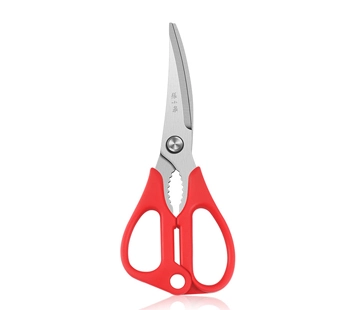In the realm of cutlery, the distinction between Western-style and Japanese knives is not merely a matter of aesthetics; it's a reflection of cultural traditions, craftsmanship, and culinary philosophies. Professional chefs navigating the diverse world of knives through Japanese knives wholesale often encounter the unique characteristics that set these two styles apart. Let's delve into the differences between Western-style and Japanese knives, from the perspective of kitchen knife wholesale suppliers, exploring how the choice between them influences the culinary experience.
Typically, Western-style knives are crafted using softer steel. This choice allows for easier maintenance and honing, making them accessible to a broader audience. However, the softer steel might require more frequent sharpening, especially in professional kitchens where knives endure rigorous use.
Japanese knives, procured through wholesale channels, often boast blades made from high-carbon or Damascus steel. These materials contribute to a harder and sharper edge, providing precision and durability. The harder steel allows for a finer edge angle, enhancing the knife's cutting performance.
Western-style knives, with their curved blades, are designed to accommodate a rocking motion during cutting. This design suits tasks like chopping and dicing, making them versatile for a range of kitchen activities. However, the curved shape might limit their effectiveness for certain precision cuts.
Japanese knives, obtained in bulk through wholesale avenues, exhibit diverse blade shapes tailored for specific tasks. The gyuto, similar to a Western chef's knife, accommodates rocking and slicing. The yanagiba, designed for slicing raw fish in sushi preparation, features a long, narrow blade. The usuba excels at vegetable work with its straight edge.
Western knives typically have a wider edge angle, which contributes to durability but may sacrifice some sharpness. This angle is suited to the rocking motion common in Western culinary techniques.
Japanese knives, renowned for their sharpness, often feature a narrower edge angle. This design enhances precision, allowing for finer and more controlled cuts. The acute edge angle is a hallmark of Japanese knives obtained through wholesale sources, contributing to their exceptional cutting performance.
Western knives commonly feature handles that are full bolsters and tangs, providing balance and heft. The handles are often designed for a comfortable grip, catering to the ergonomic preferences prevalent in Western culinary traditions.
Japanese knives, available through wholesale channels, exhibit a variety of handle designs. Traditional Japanese knives may have handles with partial tangs, emphasizing a different balance point. Modern iterations, especially those catering to the global market, incorporate ergonomic handles to bridge the cultural gap.
Rooted in European culinary traditions, Western knives are versatile tools designed for a broad range of kitchen tasks. The emphasis is on durability and functionality, catering to a style of cooking that values efficiency and adaptability.
Japanese knives, reflecting the precision and artistry of Japanese culinary culture, are often specialized for specific tasks. The emphasis is on achieving the utmost precision in cutting techniques, reflecting a culinary philosophy that places importance on aesthetics and finesse.
In conclusion, the choice between Western-style and Japanese knives, especially when procured through Japanese knives wholesale, is a matter of personal preference, culinary tradition, and the specific demands of the kitchen. Chefs navigating this diverse cutlery landscape find that each style offers unique benefits, shaping the culinary experience in distinct ways. Whether opting for the versatility of Western knives or the precision of Japanese blades, chefs can enhance their culinary prowess by selecting knives that align with their cooking styles and preferences.
Japanese knives wholesale form a cornerstone of the professional chef's toolkit. Precision, diverse blade options, superior materials, enduring sharpness, enhanced efficiency, and the infusion of artistry into every cut collectively redefine the culinary landscape. Professional chefs embracing Japanese knives wholesale not only invest in cutlery; they invest in an elevated culinary experience that captivates diners and sets new standards of excellence in the world of gastronomy.
You may also be interested in these Chinese kitchenware wholesale:


